Blog
Olympus Scanlation: A Deep Dive into the World of Manga and Manhwa Translation
Published
4 months agoon
By
Micheal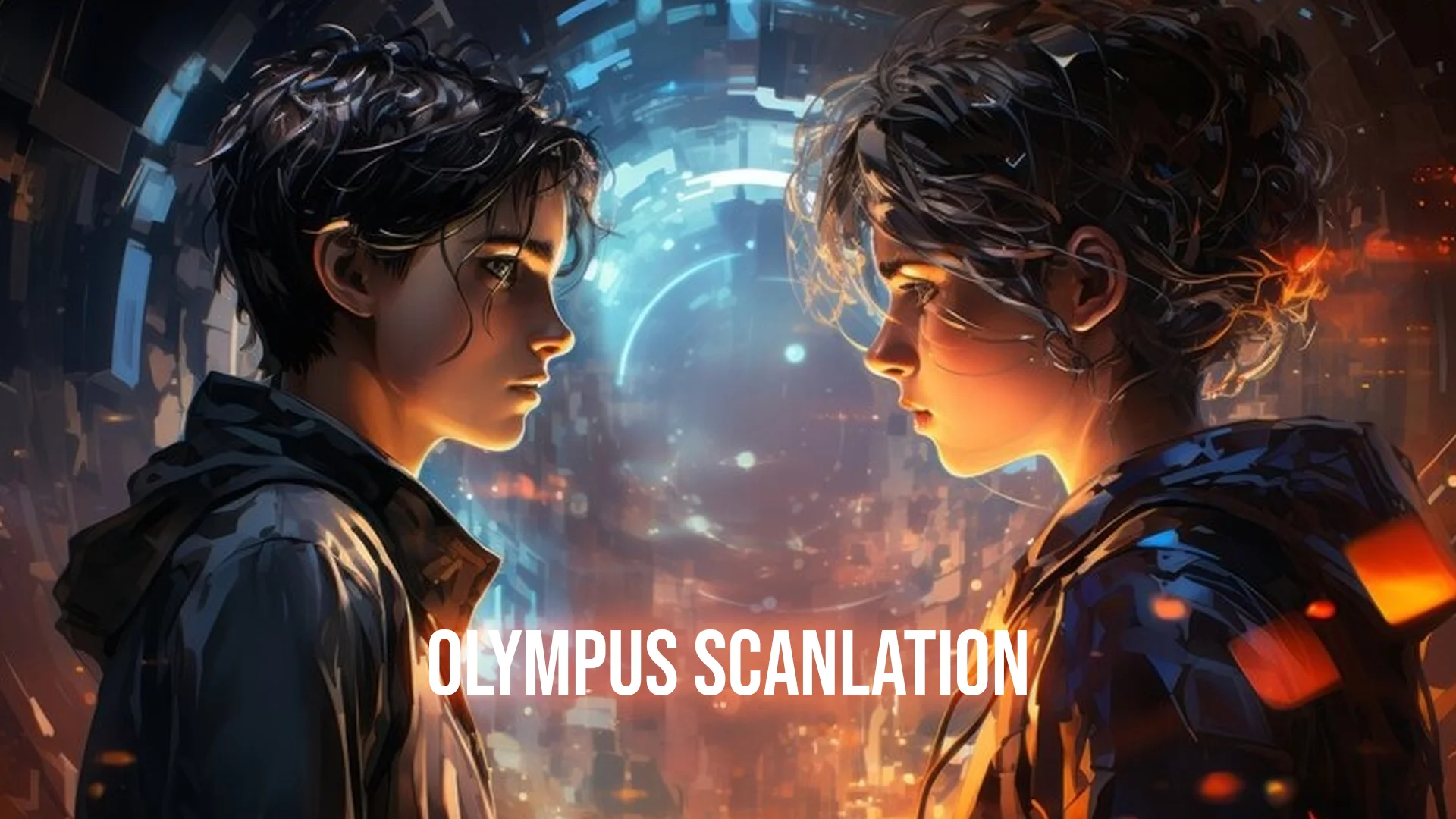
With the ever-growing popularity of manga and manhwa globally, scanlation (scanning and translating manga from its original language to others) has become crucial in making these stories accessible to non-Japanese and non-Korean speakers. One name that stands out in this community is Olympus Scanlation, a group dedicated to translating manga and manhwa for fans around the world. In this article, we’ll explore what Olympus Scanlation is, how it operates, its impact on the manga and manhwa community, and the ethical considerations surrounding scanlation.
What is Olympus Scanlation?
Olympus Scanlation is a fan-driven group that specializes in translating manga and manhwa into English and other languages. This group, like many others, consists of passionate fans who dedicate their time to make Asian comics accessible to international audiences who would otherwise not be able to enjoy them. Olympus has gained a strong following due to the quality of its work and the range of genres it covers.
Unlike official publishers, Olympus Scanlation operates in a gray area of copyright law. However, their dedication to high-quality translations, as well as their commitment to updating new chapters regularly, has cemented their place in the fan community. They are typically one of the first groups to release translations of new chapters, making them a popular choice for readers eager for the latest updates.
The Process Behind Olympus Scanlation
The process of scanlating a manga or manhwa chapter involves several steps, each requiring specialized skills and a keen eye for detail. Below is a breakdown of the typical workflow at Olympus Scanlation:
- Raw Acquisition: First, raw manga or manhwa pages are sourced. This step involves finding the latest chapters from Japan or Korea. Olympus Scanlation either purchases these or uses online sources.
- Translation: Translators, usually proficient in Japanese or Korean, convert the dialogues and text into English. This process requires a deep understanding of language nuances, cultural references, and idioms, as translators aim to make the story as accessible and authentic as possible for an English-speaking audience.
- Cleaning and Redrawing: This step involves editing the raw images to remove original text and reconstructing the artwork where text once was. Cleaners meticulously erase dialogue without damaging the artwork, while redrawers fill in any missing artwork.
- Typesetting: The typesetter inserts the translated text into the speech bubbles, narration boxes, and other areas, aiming for a style that suits the artwork and preserves the original’s flow.
- Quality Checking: Before the chapter is released, quality checkers review the work, catching errors in translation, typesetting, or image quality. This final polish is essential to ensure a high-quality reading experience.
The entire process requires the collaborative efforts of translators, editors, and artists, each of whom brings a different skill set to the project. The speed and efficiency with which Olympus Scanlation can translate and release new chapters depend on the dedication of these team members, most of whom are unpaid volunteers.
The Impact of Olympus Scanlation on the Manga and Manhwa Community
1. Increased Accessibility
Olympus Scanlation has played a crucial role in increasing the accessibility of manga and manhwa. For readers outside of Japan and Korea, finding legally available translated content can be challenging. Even when official translations are available, they are often released months after the original publication. Olympus Scanlation fills this gap, allowing fans to read the latest chapters as soon as they are available in the original language.
2. Diverse Genre Representation
Olympus Scanlation covers a wide range of genres, from action and fantasy to romance and slice-of-life. This diversity ensures that fans with varying tastes have something to enjoy, further expanding the reach of manga and manhwa. Some genres that are less popular in official releases gain traction through scanlation, giving exposure to niche stories that might otherwise remain obscure.
3. Community Building and Fan Engagement
Scanlation groups like Olympus foster a sense of community among fans. Through social media, websites, and forums, they connect readers with shared interests and offer a platform for discussion and feedback. Fans often engage with Olympus Scanlation’s content on these platforms, sharing their thoughts on storylines, character developments, and plot twists. This interaction strengthens the bond between readers and Olympus Scanlation, creating a loyal fanbase.
4. Promotion of New Talent
The global popularity of manga and manhwa has also led to a rise in original works inspired by these mediums, often created by fans in countries outside Japan and Korea. Olympus Scanlation, by translating and promoting less mainstream titles, has indirectly encouraged the emergence of new creators who aspire to tell similar stories. These new talents contribute to a more diverse storytelling landscape.
The Ethical Debate: Copyright and Legality
While Olympus Scanlation has undoubtedly brought numerous benefits to the manga and manhwa communities, the legality of scanlation remains a topic of debate. Copyright laws vary from country to country, but in general, scanlation is considered a copyright violation, as it involves the distribution of unauthorized translations.
- Intellectual Property Rights
The primary concern is that scanlation infringes on the intellectual property rights of the original creators and publishers. By translating and distributing manga without permission, scanlation groups bypass official channels and potential profits for creators. This becomes especially problematic when scanlations are distributed for free, potentially decreasing the audience for official releases.
- Impact on Official Licenses
Publishers are increasingly seeking to license popular manga and manhwa titles for global release. When scanlation groups release unofficial translations, it can reduce demand for official versions. Some publishers argue that this hampers their ability to invest in future translations or bring lesser-known works to new markets.
- Fan Argument: Accessibility and Demand
Supporters of scanlation, however, argue that the demand for these unofficial translations exists because official channels often fail to provide timely and accessible translations. Many fans cite the unavailability or high cost of official versions as a reason for reading scanlations. Olympus Scanlation and similar groups serve a demographic that might otherwise remain untapped due to language and economic barriers.
- Moral Dilemmas within the Community
Within the scanlation community, there is an ongoing debate about respecting creators. Some groups opt to halt projects if a manga or manhwa gains an official English license. Others continue, arguing that their translations serve a different audience. Olympus Scanlation has, on occasion, ceased work on certain projects to respect official releases, showcasing an awareness of the ethical issues surrounding their activities.
Future of Olympus Scanlation and the Scanlation Industry
As the popularity of manga and manhwa grows, the scanlation industry is likely to evolve. Olympus Scanlation’s future will depend on a balance between the demand for unofficial translations and the availability of official versions. Here are some trends and potential changes in the scanlation landscape:
- Rise of Simultaneous Official Translations
To curb the demand for scanlations, publishers are increasingly offering simultaneous release translations. These allow fans to read new chapters at the same time as their Japanese or Korean counterparts, reducing the need for scanlations. However, this strategy may not apply to every series due to cost and logistical constraints.
- Collaborations Between Publishers and Scanlators
In some cases, publishers have sought to work with popular scanlators to produce official translations. This trend, though rare, could pave the way for a more collaborative future in which scanlation groups like Olympus Scanlation transition into semi-official translation partners.
- Increased Enforcement of Copyright Laws
Some publishers have begun taking legal action against scanlation websites and groups, especially those that profit through advertising. If enforcement efforts increase, Olympus Scanlation may face new challenges. The future may see stricter takedowns or copyright claims affecting how and where scanlations are hosted.
- Technological Innovations in Translation
Advancements in AI-driven translation tools may also influence scanlation. These tools could speed up translation and typesetting processes, allowing for faster releases without compromising quality. However, human translators bring a nuance to language that technology has yet to replicate fully, especially in creative fields where cultural context is key.
Conclusion
Olympus Scanlation stands as a significant figure in the manga and manhwa fan communities, bridging cultural and language barriers and providing readers worldwide with stories they would otherwise miss. The dedication of Olympus Scanlation members, their commitment to quality, and their connection with fans have helped shape the global landscape of manga and manhwa consumption. However, ethical and legal challenges continue to cast a shadow over the scanlation industry, raising questions about the future of this fan-driven endeavor.
The ongoing debate about scanlation’s impact on the industry reflects broader questions about accessibility, intellectual property, and the value of storytelling. As the industry evolves, Olympus Scanlation’s journey will likely serve as both an inspiration and a cautionary tale about the power of fan-driven media and the boundaries of legality and ethics.
You may like
Blog
Alyson H. Belcourt: The Intersection of Indigenous Identity and Contemporary Art
Published
2 months agoon
December 25, 2024By
Micheal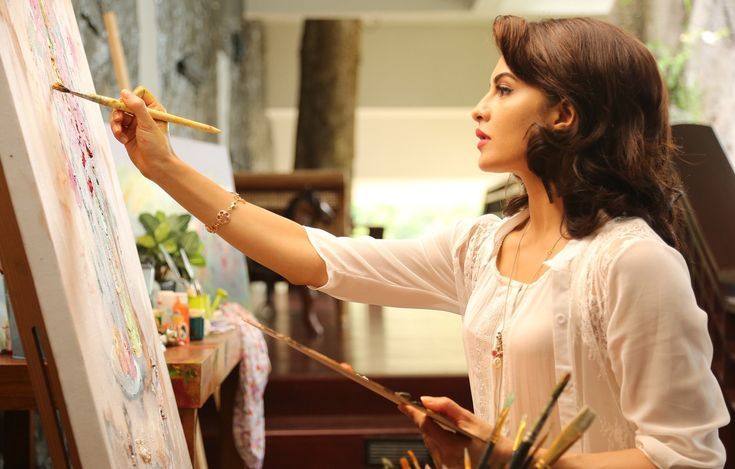
Introduction
Alyson H. Belcourt is a renowned Indigenous artist whose works explore the intersection of cultural identity, technology, and the natural world. With a background deeply rooted in Indigenous traditions and an eye focused on contemporary art movements, Belcourt has emerged as a prominent figure in the Canadian art scene. Through her unique approach, she uses both traditional and modern mediums to create art that resonates with a broad audience, while also addressing the complex issues facing Indigenous communities today. Her art is an exploration of personal and collective identity, bridging the gap between the past and the present.
In this article, we will delve into the significance of Alyson H. Belcourt’s work, the themes she explores in her art, and how her heritage informs her creative practice. We will also examine how she uses her art to challenge stereotypes, educate the public, and inspire conversations about cultural preservation and the future of Indigenous communities.
Early Life and Background
Alyson H. Belcourt was born in the Métis settlement of Treaty 6 territory in Alberta, Canada. Her Indigenous heritage is a vital influence on her artistic journey. As a member of the Métis community, Belcourt’s works often reflect the complexities of being part of a people whose identity is a blend of both European and Indigenous heritage. Growing up with an understanding of this duality, she was shaped by both the traditional values of her Métis culture and the contemporary experiences of Indigenous peoples in Canada.
Belcourt pursued formal training in art, attending the Alberta College of Art and Design (ACAD), where she honed her technical skills and began to develop a unique style. Throughout her academic and professional career, Belcourt has consistently been motivated by her desire to preserve her heritage while embracing the evolving art world. Her works reflect her lifelong commitment to finding ways to express Indigenous identities within the context of modern-day art practices.
Themes and Artistic Expression
Indigenous Identity and Cultural Representation
One of the central themes in Alyson H. Belcourt’s art is the exploration of Indigenous identity. As an artist from the Métis community, she is especially attuned to the complexities and nuances of Indigenous identity, which is often shaped by a combination of ancestral traditions, historical trauma, and modern-day challenges. Belcourt’s work often investigates how identity is constructed, maintained, and transformed over time. By incorporating traditional Indigenous symbols, colors, and designs into her art, she strives to create a visual dialogue about cultural continuity and the resilience of Indigenous peoples.
Her art also challenges the stereotypes and misrepresentations that frequently accompany portrayals of Indigenous cultures. Belcourt’s works push back against the simplistic and often negative portrayals of Indigenous peoples in mainstream media, offering instead a more nuanced, dynamic, and celebratory perspective of Indigenous experiences. Through her visual storytelling, she highlights the depth, complexity, and vibrancy of her heritage while offering a counterpoint to the dominant narratives that have historically marginalized Indigenous voices.
The Natural World and Technology
Another significant theme in Belcourt’s work is the interplay between the natural world and technology. As an artist, she often juxtaposes the organic and the technological, exploring how these two realms can coexist, overlap, and influence one another. This is especially evident in her mixed-media works, where she combines traditional Indigenous imagery and motifs with contemporary techniques, such as digital media and printing.
Belcourt’s engagement with technology reflects her belief that modern tools can be used to amplify Indigenous voices and preserve cultural knowledge in new ways. However, she does not see technology as an entirely separate realm from the natural world. Rather, her work suggests that technology, when approached with mindfulness and respect, can be integrated into the cultural practices of Indigenous peoples without erasing the spiritual and ecological principles that have guided them for generations.
Historical Trauma and Resistance
Belcourt’s art also touches on themes of historical trauma and the ongoing struggles that Indigenous communities face as they resist colonization and cultural erasure. Her works examine the effects of residential schools, land dispossession, and other forms of cultural violence that Indigenous peoples have endured. Through her art, Belcourt seeks to honor the resilience and strength of Indigenous communities, acknowledging the pain and hardship of the past while also celebrating the ability to persist and thrive.
Her works frequently depict imagery that speaks to this resistance, incorporating both symbolic and literal references to Indigenous history, struggles, and triumphs. Whether through the use of bold colors or abstracted representations of the land, her art underscores the importance of memory and collective storytelling in preserving Indigenous histories. It also emphasizes the power of art to serve as a form of resistance against the forces of colonization and oppression.
The Role of Women in Indigenous Communities
Another important theme in Belcourt’s work is the role of women within Indigenous communities. Throughout her career, she has drawn attention to the ways in which women have been central to the survival and continuation of Indigenous cultures. In her art, women are often depicted as figures of strength, wisdom, and leadership, reflecting their crucial role in maintaining cultural practices, raising children, and advocating for their communities.
This theme is particularly poignant in the context of Belcourt’s own experiences as a Métis woman. By focusing on the power and resilience of Indigenous women, she provides a counter-narrative to the historical erasure of women’s roles in Indigenous societies. Her works seek to empower Indigenous women and ensure that their stories are told and celebrated.
Mediums and Techniques
Alyson H. Belcourt’s work spans a wide range of mediums and techniques, including painting, printmaking, mixed media, and digital art. This versatility allows her to explore her themes in new and innovative ways, while also demonstrating her ability to adapt to the evolving landscape of contemporary art.
Belcourt’s use of mixed media is particularly significant, as it enables her to combine traditional Indigenous symbols with modern techniques and materials. This fusion of old and new reflects her belief that contemporary Indigenous art can and should draw upon both traditional and innovative approaches. For example, she may incorporate elements such as beadwork, quillwork, or other traditional craft techniques alongside modern digital prints or laser-cut designs. This blending of mediums creates works that are both visually striking and deeply meaningful, bridging the gap between the past and the present.
Additionally, her engagement with digital media highlights her understanding of the importance of technology in today’s world. By using digital tools, Belcourt can reach a wider audience and engage with new methods of artistic expression. However, she remains rooted in her cultural heritage, always striving to create works that are deeply connected to her Métis roots.
Exhibitions and Recognition
Throughout her career, Alyson H. Belcourt has exhibited her work in numerous galleries and institutions across Canada and internationally. Her exhibitions have been celebrated for their thought-provoking content and innovative approach to contemporary Indigenous art. Her works have been displayed in esteemed venues such as the Art Gallery of Alberta, the National Gallery of Canada, and the Winnipeg Art Gallery, among others.
Belcourt has received recognition not only for her artistic achievements but also for her advocacy of Indigenous artists and communities. She has been involved in a variety of initiatives aimed at promoting Indigenous art and culture, and she frequently collaborates with other Indigenous artists to foster collective creativity and cultural exchange. Through her work and her activism, Belcourt has become an influential figure in the broader conversation about the role of Indigenous art in contemporary society.
Conclusion
Alyson H. Belcourt’s art is a powerful reflection of her Métis identity and her commitment to exploring the complexities of Indigenous life in a modern world. Through her innovative use of traditional and contemporary techniques, she challenges dominant narratives about Indigenous peoples while celebrating the strength, resilience, and beauty of her culture. By blending the natural world, technology, and historical trauma, Belcourt’s work offers a multifaceted perspective on the ongoing struggle for Indigenous rights and cultural preservation.
As an artist, activist, and cultural advocate, Alyson H. Belcourt continues to inspire conversations about the future of Indigenous communities and the role of art in both preserving and transforming cultural identities. Her work not only enriches the world of contemporary art but also contributes to the broader dialogue about the importance of Indigenous knowledge, stories, and experiences. Through her powerful imagery and thought-provoking concepts, Belcourt proves that art can be a tool for healing, education, and resistance, making her an invaluable figure in the world of Indigenous and contemporary art.
Blog
Ted Koch: A Journey of Engagement and Influence
Published
2 months agoon
December 25, 2024By
Micheal
Ted Koch, a name that resonates with many across various fields, has carved a niche for himself through his deep engagement in multiple industries and causes. Known for his work in the entertainment industry, community building, and advocacy, Koch has built a reputation as a multifaceted leader and influencer. His ability to navigate different spheres with purpose and authenticity has made him an admired figure. This article explores Ted Koch’s engagement in his various pursuits, examining his contributions to society, the entertainment industry, and his approach to leadership.
Early Life and Career Beginnings
Ted Koch’s journey toward becoming an influential figure did not start overnight. Born in the early 1970s, Koch grew up with an innate curiosity and drive for understanding the world around him. His early years were shaped by his passion for the arts and his interest in how media and entertainment shaped public perception. He pursued a degree in communications, which laid the foundation for his future in the entertainment industry.
After completing his studies, Koch entered the industry as an actor, taking on various roles in television and film. While his acting career offered a platform to showcase his talents, it was his ability to connect with people both in front of and behind the camera that set him apart. Over time, his understanding of the entertainment industry grew, and he realized that his true calling was not just in acting but in creating and facilitating meaningful dialogue and collaboration.
Ted Koch’s Engagement in the Entertainment Industry
Ted Koch’s career trajectory in the entertainment world has been marked by a commitment to creating work that resonates with audiences while also fostering deeper connections. Known for his role in various television shows, Koch has worked in diverse genres, from dramas to comedies. His roles, often characterized by complexity and authenticity, have earned him praise from both critics and fans alike.
However, his influence in the entertainment industry extends beyond acting. Ted Koch has been involved in the creation and production of content, recognizing that storytelling is one of the most powerful tools in shaping cultural norms and social movements. His ability to engage in multiple facets of production has allowed him to advocate for projects that reflect diverse perspectives and encourage thoughtful conversation.
Building Authentic Connections
One of the standout qualities of Ted Koch’s career is his ability to build authentic relationships with those around him. Whether working on a television set or engaging with fans on social media, Koch has demonstrated that true engagement comes from understanding and valuing others. He has often spoken about the importance of fostering genuine connections, not just for professional advancement but also for personal growth.
In an industry often criticized for its superficiality, Koch has been a breath of fresh air. He is known for prioritizing collaboration and respect over competition, believing that true success is not only about individual accomplishments but about lifting others along the way. His approach to networking has helped him build lasting relationships with industry professionals, leading to new opportunities both in front of and behind the camera.
Ted Koch’s Commitment to Community Engagement
While Ted Koch has enjoyed a successful career in entertainment, his dedication to community engagement is perhaps even more impressive. Over the years, Koch has consistently used his platform to support various social causes, advocating for positive change in both local and global communities. His belief that individuals can have a lasting impact on the world has fueled his efforts in promoting social justice, environmental sustainability, and mental health awareness.
One of the areas in which Ted Koch has been particularly active is in the fight for mental health awareness. Having experienced personal struggles with mental health, Koch has been outspoken about the importance of breaking the stigma surrounding mental illness. He has collaborated with organizations that provide support and resources for individuals suffering from mental health challenges, particularly focusing on the importance of self-care and seeking help when needed.
Supporting Charitable Organizations
In addition to his mental health advocacy, Ted Koch has been involved with a variety of charitable organizations, supporting causes ranging from environmental sustainability to education. He has used his influence to raise awareness for initiatives that work toward eradicating poverty, promoting gender equality, and providing access to education for marginalized communities. His support for these causes goes beyond financial contributions; he actively engages with these organizations, using his public platform to amplify their messages.
Koch’s dedication to charity work has earned him the admiration of many. By aligning himself with causes that reflect his personal values, he has become a role model for others who aspire to use their platform for good. His commitment to giving back has not only made a difference in the lives of many individuals but has also inspired others to take action.
Leadership and Mentorship
Another key aspect of Ted Koch’s engagement is his focus on leadership and mentorship. As someone who has navigated multiple career transitions, Koch understands the importance of guidance and support in achieving success. He has consistently taken on mentorship roles, offering advice and encouragement to those looking to break into the entertainment industry.
Koch’s leadership style is rooted in empathy and collaboration. Rather than adopting a top-down approach, he believes in leading by example and fostering an environment where all voices are heard. He has spoken at length about the need for diverse perspectives in leadership roles, particularly in industries like entertainment, where creative vision is often shaped by a small group of decision-makers.
Empowering Others to Lead
One of the most inspiring aspects of Ted Koch’s leadership is his focus on empowering others to take the reins and lead in their own right. He believes that true leadership is about recognizing the potential in others and helping them realize their strengths. By encouraging those around him to pursue their passions and take on leadership roles, Koch has helped build a legacy of empowerment.
His mentorship extends beyond the professional sphere. Koch is dedicated to helping individuals from underrepresented communities find their voice and thrive in environments that may not always be welcoming. Through his work with various nonprofits and educational programs, he has helped open doors for young people to succeed and make a difference in their own communities.
Ted Koch’s Philosophy on Engagement and Influence
At the heart of Ted Koch’s approach to his career and life is his philosophy on engagement and influence. For Koch, engagement is about being present and actively participating in the communities and industries he is a part of. It’s not enough to simply occupy a space; one must contribute meaningfully and with intention.
He believes that influence is not about gaining power or recognition but about using one’s platform and position to affect positive change. Whether in the entertainment industry or in his charitable efforts, Koch has always sought to use his influence to elevate others and make the world a better place.
The Power of Purposeful Engagement
Ted Koch has spoken frequently about the importance of purposeful engagement. He believes that to truly make a difference, individuals must engage in activities that align with their values and passions. For Koch, this means creating work that is not just entertaining but also thought-provoking and meaningful. It means supporting causes that reflect his commitment to justice, equality, and sustainability.
In his view, purposeful engagement is also about being mindful of the impact one has on others. Whether through his acting roles, charitable work, or personal interactions, Koch strives to be a positive force in the lives of those he encounters. He encourages others to do the same, believing that small acts of kindness and engagement can have a ripple effect that leads to larger societal change.
Conclusion
Ted Koch’s career and life are a testament to the power of engagement and influence. Through his work in the entertainment industry, his commitment to social causes, and his dedication to leadership and mentorship, Koch has shown that true success is about more than personal achievement. It is about using one’s talents, resources, and platform to make a meaningful difference in the world.
Koch’s engagement with the world is marked by authenticity, empathy, and a deep sense of purpose. His influence extends far beyond the screen, touching the lives of countless individuals who have been inspired by his actions and words. As he continues on his journey, it is clear that Ted Koch will remain a force for good, driving positive change and encouraging others to do the same. His legacy of engagement is one that will inspire generations to come.
Blog
Exploring the Rich Tapestry of Ancient Art
Published
4 months agoon
November 19, 2024By
Henry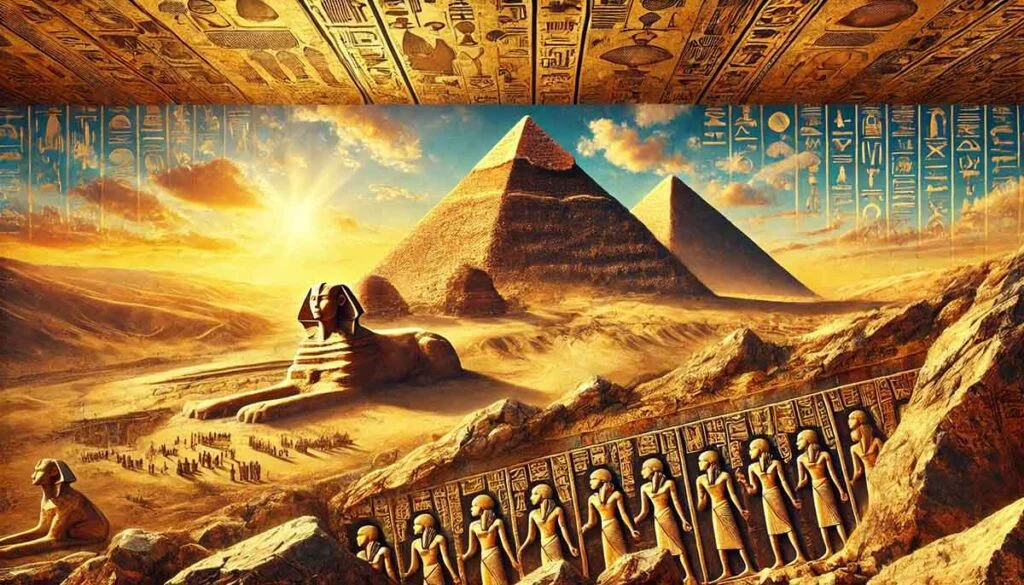
Ancient art serves as a window into the lives, beliefs, and cultures of early civilizations. From the intricate hieroglyphs of Egypt to the majestic sculptures of Greece, these artistic expressions offer invaluable insights into human history. This article delves into the diverse forms of ancient art, their cultural significance, and their enduring legacy.
Understanding Ancient Art
Ancient art encompasses the creations of early societies, reflecting their values, religious beliefs, and social structures. These artworks, ranging from paintings and sculptures to pottery and architecture, provide a tangible connection to our ancestors.
The Role of Art in Early Societies
In ancient times, art was not merely for aesthetic pleasure; it played a crucial role in daily life. It was used in religious rituals, as a means of communication, and to demonstrate power and status. For instance, the grandiose pyramids of Egypt were not only tombs but also symbols of pharaonic authority and religious devotion.
Major Forms of Ancient Art
Sculpture
Sculpture was a prominent form of expression in ancient cultures. The Greeks, for example, are renowned for their lifelike statues that celebrated the human form. The “Venus de Milo” and the “Discobolus” are exemplary pieces that showcase the Greeks’ mastery in depicting movement and anatomy.
Painting
While many ancient paintings have not survived the ravages of time, those that remain offer a glimpse into the past. The frescoes of Pompeii, preserved by volcanic ash, depict scenes of daily life, mythology, and nature, providing a vivid picture of Roman society.
Pottery
Pottery served both functional and decorative purposes. The intricate designs on Greek vases, often illustrating mythological tales, highlight the importance of storytelling in ancient cultures. Similarly, Chinese porcelain from the Han dynasty showcases advanced techniques and artistic sophistication.
Architecture
Ancient architecture stands as a testament to the ingenuity and creativity of early civilizations. The Parthenon in Athens, with its Doric columns and intricate friezes, exemplifies Greek architectural excellence. In contrast, the ziggurats of Mesopotamia reflect the religious and social structures of the time.
Cultural Significance of Ancient Art
Religious and Spiritual Expression
Many ancient artworks were created for religious purposes. The intricate carvings of Hindu temples in India, depicting deities and mythological scenes, were intended to inspire devotion and convey spiritual teachings.
Political Propaganda
Art was also a tool for political expression. Roman emperors commissioned statues and monuments to project power and legitimize their rule. The “Augustus of Prima Porta” statue, for instance, portrays the emperor as a divine and authoritative figure.
Social Commentary
Some artworks provide insights into the social dynamics of the time. The terracotta army of China’s Qin dynasty not only demonstrates the emperor’s power but also reflects the hierarchical structure of the society.
Preservation and Legacy
Preserving ancient art is crucial for understanding human history. Archaeological efforts have unearthed countless artifacts, allowing us to study and appreciate the artistic achievements of our ancestors. Museums worldwide house these treasures, making them accessible to the public and ensuring their protection for future generations.
Challenges in Preservation
Despite efforts, many ancient artworks face threats from environmental factors, looting, and conflict. The destruction of cultural heritage sites in war-torn regions underscores the need for international cooperation in preserving these irreplaceable pieces of history.
Conclusion
Ancient art offers a profound connection to our past, illuminating the beliefs, values, and experiences of early civilizations. By studying and preserving these artworks, we not only honor the creativity of our ancestors but also gain insights that enrich our understanding of human history.
FAQs
What defines ancient art?
Ancient art refers to the creations of early civilizations, typically those that existed before the fall of the Western Roman Empire in 476 AD. It includes various forms such as sculpture, painting, pottery, and architecture.
Why is ancient art important?
Ancient art provides valuable insights into the cultures, beliefs, and daily lives of early societies. It helps us understand historical contexts and the evolution of human expression.
How is ancient art preserved?
Preservation involves careful excavation, restoration, and protection of artifacts. Museums play a vital role in housing and displaying ancient art, ensuring its accessibility and safeguarding it from damage.
What are some famous examples of ancient art?
Notable examples include the Egyptian pyramids, the Parthenon in Greece, the Terracotta Army in China, and the frescoes of Pompeii in Italy.
How does ancient art influence modern art?
Ancient art has significantly influenced modern art through its techniques, themes, and aesthetics. Many contemporary artists draw inspiration from ancient motifs and styles.
Where can I see ancient art?
Ancient art can be viewed in museums worldwide, such as the Louvre in Paris, the British Museum in London, and the Metropolitan Museum of Art in New York. Additionally, archaeological sites like the Acropolis in Athens and the Pyramids of Giza offer firsthand experiences of ancient art and architecture.
Trending
-
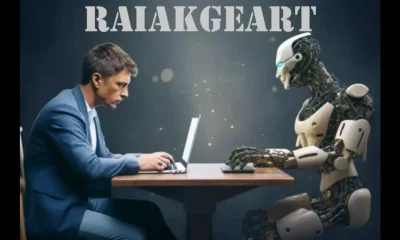
 Tech5 months ago
Tech5 months agoRaiakgeart: Revolutionizing Outdoor Adventure Gear
-

 Business5 months ago
Business5 months agoSarah Laud Colgate: A Trailblazer in Business and Philanthropy
-

 News5 months ago
News5 months agoExclusivenism: A Deep Dive into an Emerging Concept
-

 Fashion5 months ago
Fashion5 months agoPampsun: The Journey to Radiant Wellness
-

 Blog5 months ago
Blog5 months agoExploring Suwuianna: A Cultural and Natural Paradise
-
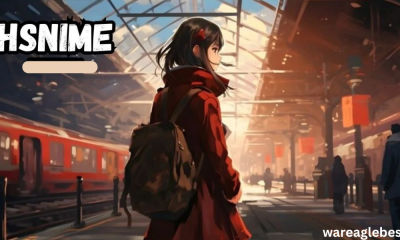
 Blog5 months ago
Blog5 months agoThe Evolution and Impact of H-Sanime: A Deep Dive into the World of Hentai Anime
-

 Health5 months ago
Health5 months agoFinding Your Fitness Balance: The Anna Rogalev Approach to Health and Well-being
-

 Entertainment5 months ago
Entertainment5 months agoWaethicc: A Global Perspective
